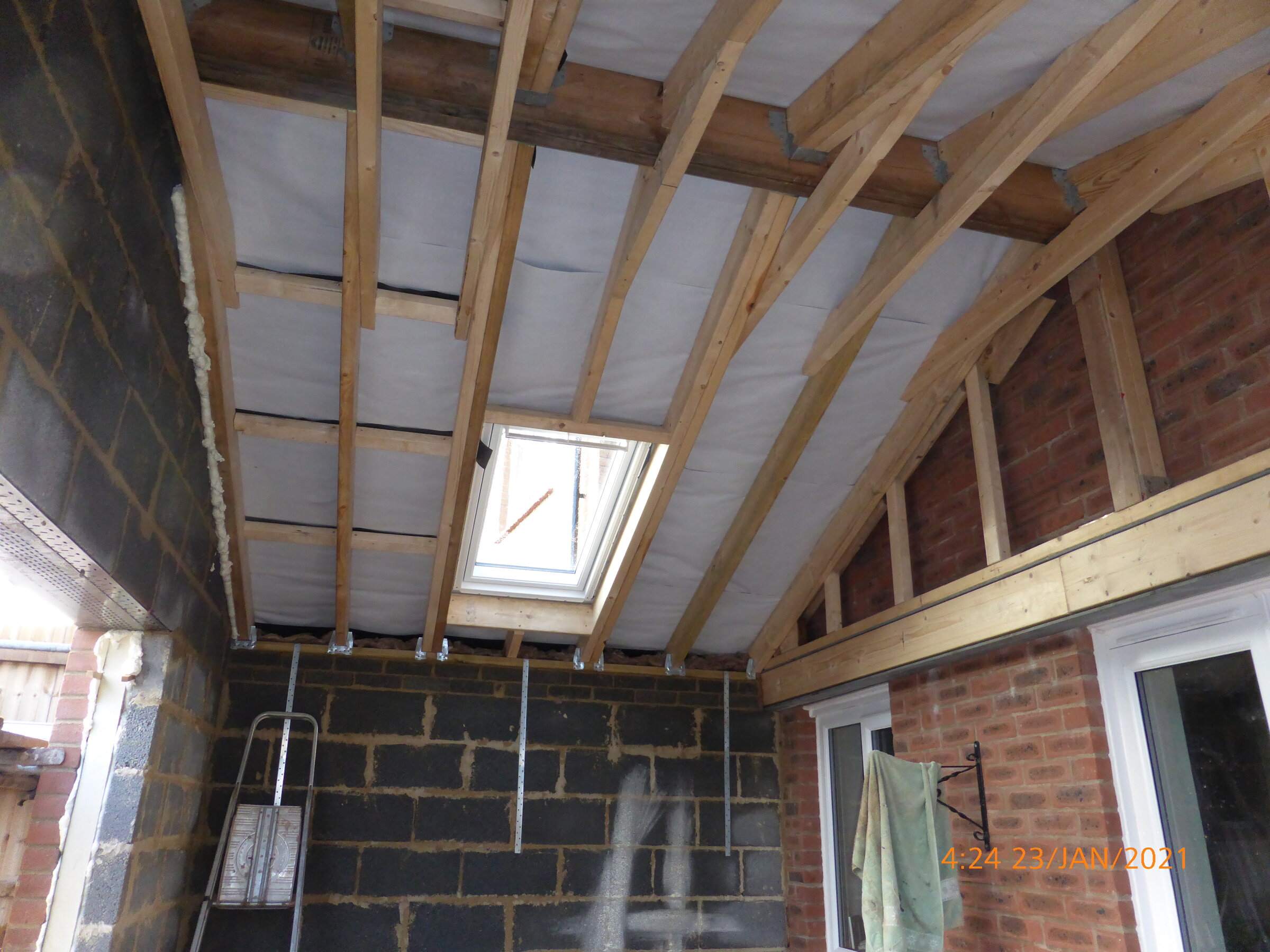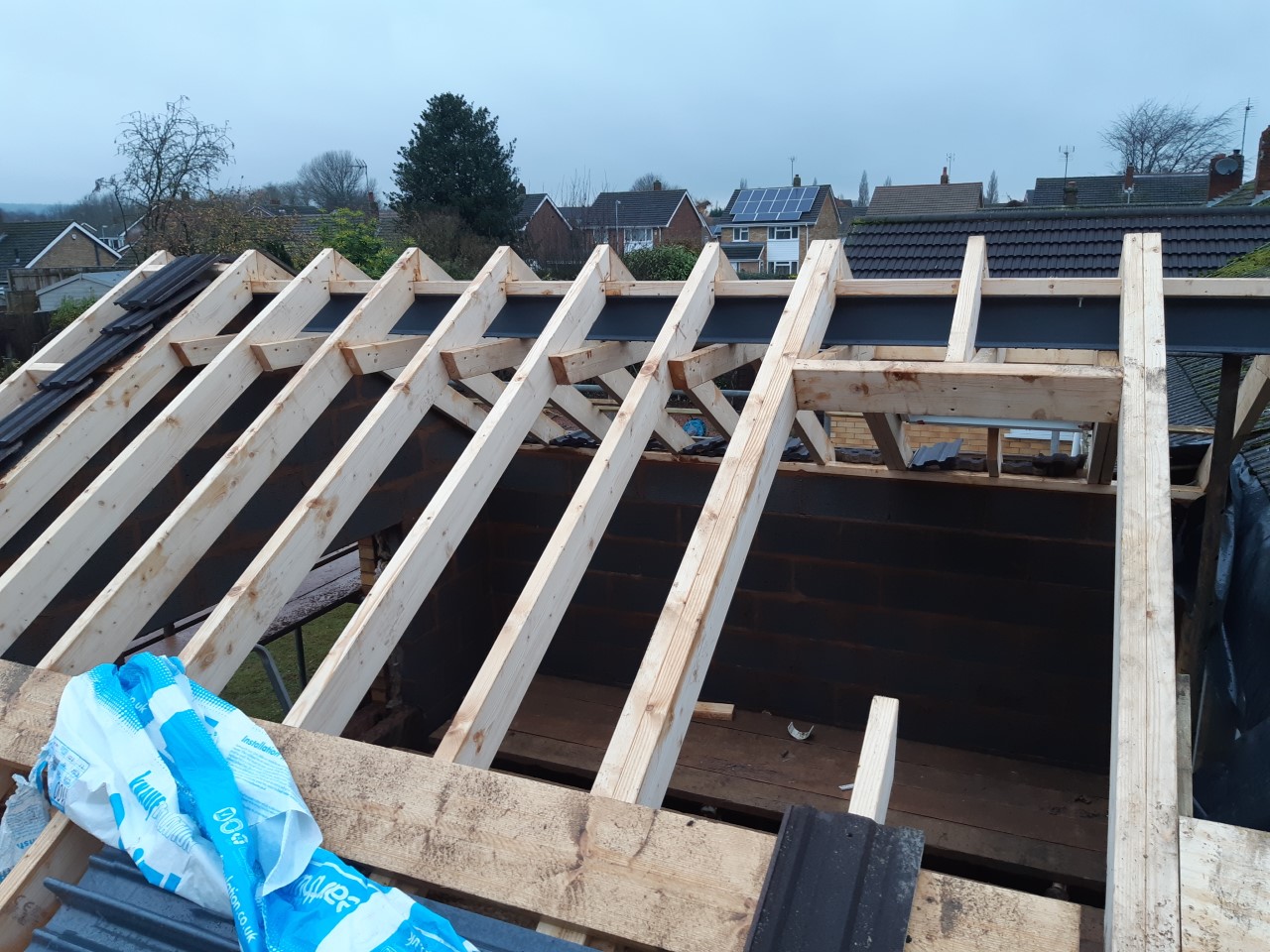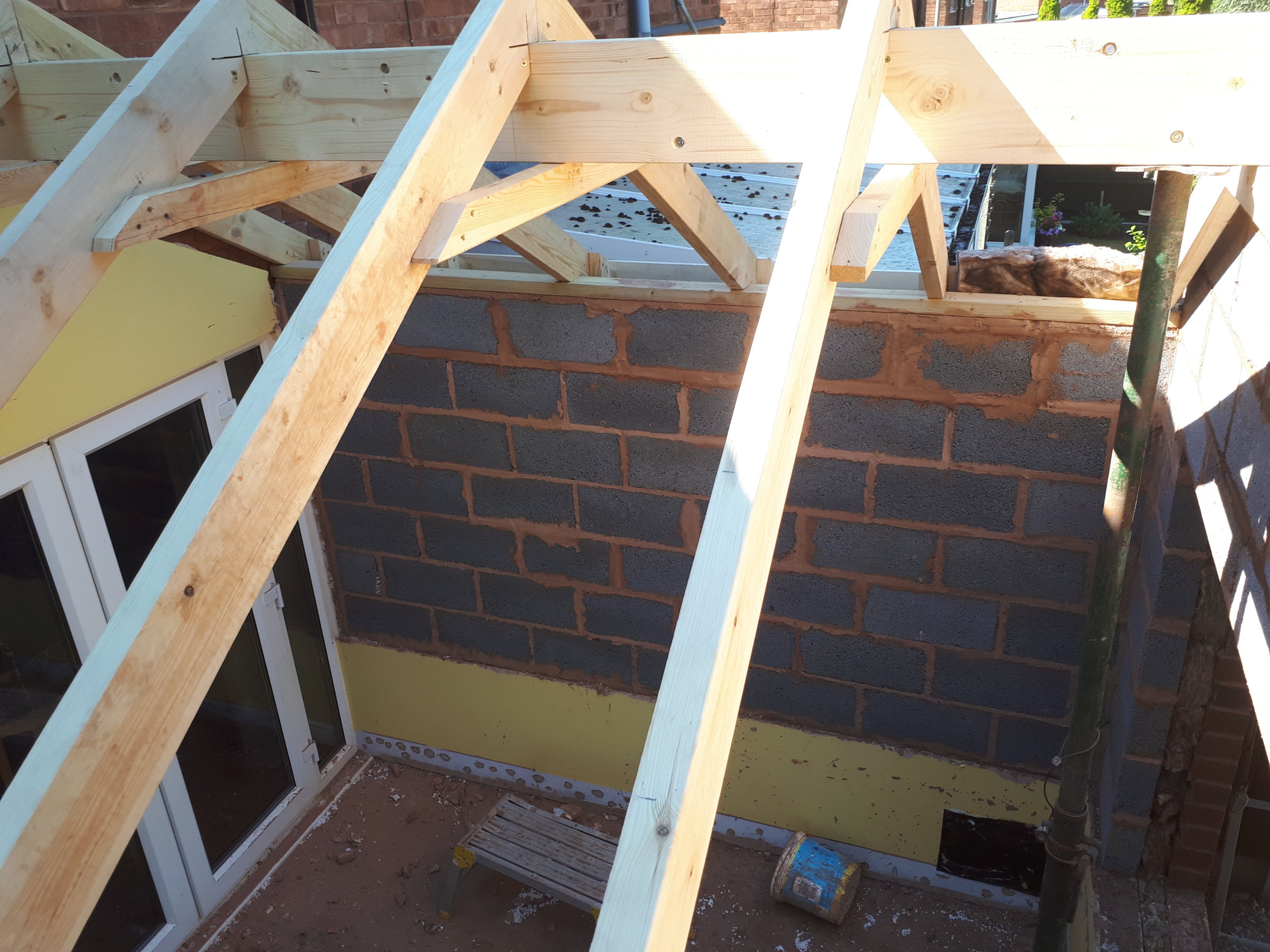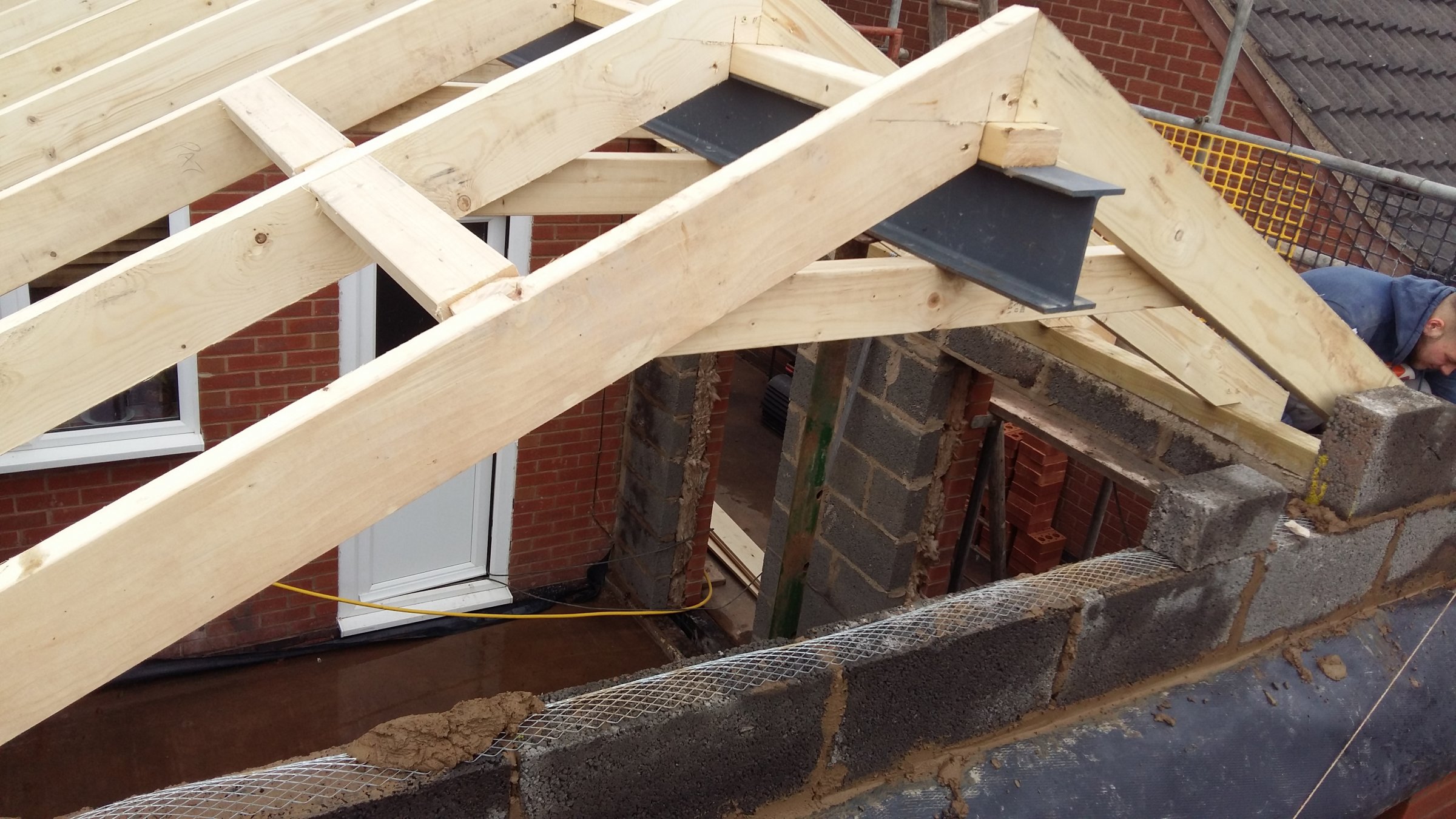Hi there.
I'm building a garden room at the bottom of my garden.
If will be approximately 4m by 3M - with a pitched roof. ( ridge length ways 4 M )
The reason I want it pitched is to block out sight lines of an ugly fence at the back , and It will fit in better to the surrounds. My limit is 4 M high but this would be too high.
Its likely the roof material will be faux slate or similar, but I'd like to have the option of real slate. I also want it ' vaulted ' inside ideally, so when I add in insulation etc, it will have a decent load. ( foundations will be block peer & using 5x2 C24 doubled so span tables suggest heavy load is 'fine' )
I haven't worked out the exact pitch yet ( open to suggestions ) but my general plan is to create a ridge beam ( not board ) using two 9x2 's bolted ( glued?) Sitting raftered on top ..... AND having collar ties underneath these.
Questions on the roof -
- Does it make a difference structurally if rafters are sitting 'on' the beam / or against the beam ?
- i think i need collar ties. But perhaps there is a better way ? I've seen larger projects on YouTube use something similar to a ridge beam but quarter the way up each side. ( all transferring weight to gable end and onto foundation )
- Some of my reasoning for a ridge beam and not a senf supported ridge board is lack of experience mixed with the need to work alone for most of this.
Any advice appreciated.
I'm building a garden room at the bottom of my garden.
If will be approximately 4m by 3M - with a pitched roof. ( ridge length ways 4 M )
The reason I want it pitched is to block out sight lines of an ugly fence at the back , and It will fit in better to the surrounds. My limit is 4 M high but this would be too high.
Its likely the roof material will be faux slate or similar, but I'd like to have the option of real slate. I also want it ' vaulted ' inside ideally, so when I add in insulation etc, it will have a decent load. ( foundations will be block peer & using 5x2 C24 doubled so span tables suggest heavy load is 'fine' )
I haven't worked out the exact pitch yet ( open to suggestions ) but my general plan is to create a ridge beam ( not board ) using two 9x2 's bolted ( glued?) Sitting raftered on top ..... AND having collar ties underneath these.
Questions on the roof -
- Does it make a difference structurally if rafters are sitting 'on' the beam / or against the beam ?
- i think i need collar ties. But perhaps there is a better way ? I've seen larger projects on YouTube use something similar to a ridge beam but quarter the way up each side. ( all transferring weight to gable end and onto foundation )
- Some of my reasoning for a ridge beam and not a senf supported ridge board is lack of experience mixed with the need to work alone for most of this.
Any advice appreciated.





